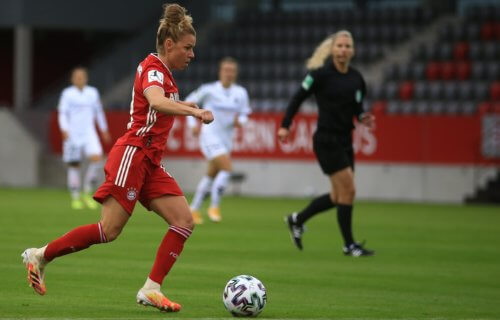TSUKUBA, Japan — Soccer ranks as the most popular sport in 57 countries around the globe. Outside of the U.S., of course, the sport is referred to as football. From the World Cup to the Champion’s League, the sport brings big business, and star players earn some of the largest salaries seen across all professional athletics. Scoring goals is no easy task, though, as evidenced by the low final scores seen in most soccer games. So what’s the secret to more soccer goals? Perhaps science holds the answer.
New research from the University of Tsukuba analyzes how great soccer players kick the ball to achieve their desired trajectory. Study authors say factors like swing angle and foot orientation can be adjusted to control the point of contact and attack angle between the foot and the ball. This generates different kinds of shots in soccer — such as straight, curve, or knuckle ball shots.
A strong understanding of how to adjust one’s foot orientation and swing when kicking a soccer ball can help players achieve a competitive advantage and improved goal-scoring chances.
“The point of impact on the ball matters. For a straight ball trajectory, aim close to center, otherwise, aim off-center—for a curved ball trajectory, aim closer to the near side of the ball, and for a knuckle ball, aim closer to the far side,” says first study author Karol Kimachi in a statement.
‘Swing’ is key to directing a soccer ball
The distance to the impact point from the center of gravity of the foot affects ball rotation to create either straight, curved, or unpredictable ball trajectories. It’s the angle of the foot’s swing toward the ball, however, that dictates where (i.e. location of point of contact) and how (i.e. angle of attack) the foot will make impact.
“Using high-speed 3D motion capture technology, we confirmed that the correlation between the angle of the swing vector and the resulting ball rotation was high,” senior author Professor Masao Nakayama explains. “We then characterized the foot-to-ball interactions in straight, curved, and knuckle-ball kicks.”
The study finds that for all three varieties of kick, toes should be pointed downward and the foot rotated outward. That said, for curved and knuckle-ball trajectories, the foot should be everted slightly less; this allows the inside of the foot to make contact with the ball. Meanwhile, for a straight trajectory, the top of the instep of the foot should make contact with the ball.
Coaches working with players looking to improve their goal-scoring prowess should focus on the desired outcome, study authors say. For example: “For a curve shot, kick from a wide inside angle and angle your foot so that your impact (initial contact) point on the ball is off-center”.
While this work focused on professional soccer specifically, researchers believe the findings can help improve skills in soccer development programs, as well as entirely different sports.
The study is published in Proceedings of the Institution of Mechanical Engineers, Part P: Journal of Sports Engineering and Technology.
https://youtu.be/jONTEfu7S0Y
